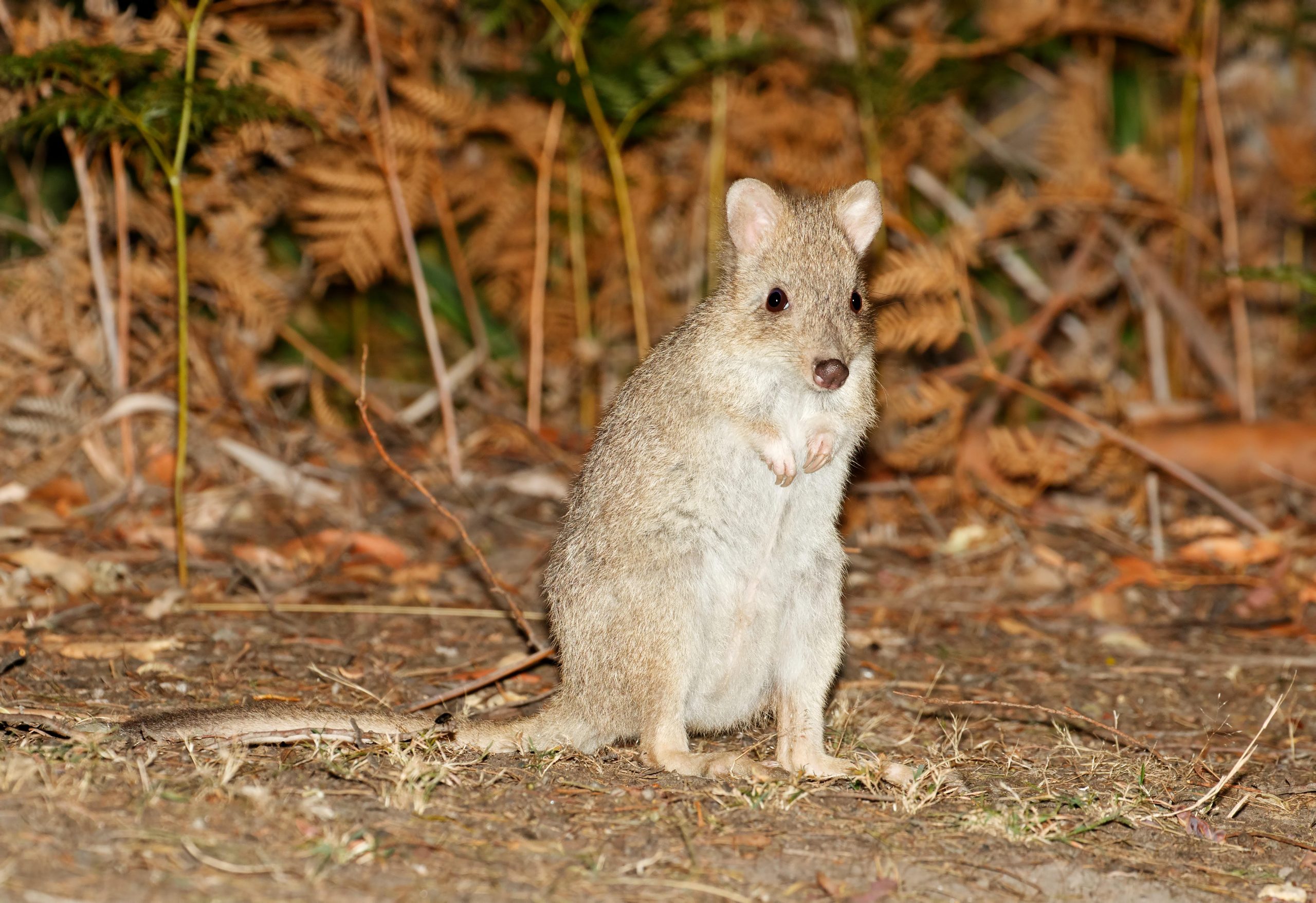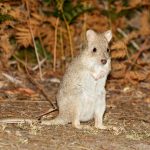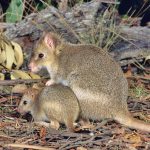Eastern Bettong
(Bettongia gaimardi)
These small macropods are a brown-grey colour, with cream feet and a white belly. They are nocturnal, coming out at night-time to feed on fungi, seeds, roots and insects.
DESCRIPTION
Also known as ‘rat kangaroos’, these small nocturnal marsupials were once widespread throughout Australia. There are five species of Bettongs:
- Eastern (or Tasmanian) Bettong (Bettongia gaimardi)
- Burrowing Bettong (or Boodie) (B. lesueur)
- Brush-tailed Bettong (or Woylie) (B. penicillata)
- Northern Bettong (B. tropica), and
- Rufous Bettong (Aepyprymnus rufescens).
All Bettongs are nocturnal, sleeping during the day in well camouflaged nests – depressions in the ground lined with leaf litter or at the bases of tussocks. They have furry coats ranging in colour from grey to gingery brown, and have long prehensile tails that they can use to grasp bark and grass to carry to their nests.
Except for the rufous bettong, which is quite common and found along the eastern coast of Australia, all bettongs have suffered significant declines in their distribution. This is because of the expansion of agriculture, which has destroyed their nests, and the introduction of feral predators, which has been devastating. In the late 1920s, following the introduction of foxes, the mainland population of the eastern bettong became extinct, with the species now restricted to Tasmania (except for a reintroduced population inside a protected area in the Australian Capital Territory). Goats, pigs and deer also compete for similar foods, and episodic events such as fires or floods leave the bettong extremely vulnerable.
While the eastern bettong has only one young per litter, the gestation period is only three weeks long and the female can produce three young each year, depending on the conditions. Hence populations can fluctuate remarkably.
Although quite small (weighing around 2kg), bettongs are extremely important to the ecosystem as their digging among the leaf litter helps to reduce fuel loads and fire risk in dry grassy forests and woodlands. They also disperse fungal spores and seeds via their scats, snouts and paws as they move about the landscape. When the bettongs’ population dwindles, the ecosystem suffers because the loss of ground-foraging native species heightens the risk of fire.
When disturbed, eastern bettongs dart away in big hops, zig zagging to confuse their predator. With so many threats, the bettong needs to be agile to survive.
Want to see eastern bettongs at Wildlife Wonders? Book here!








